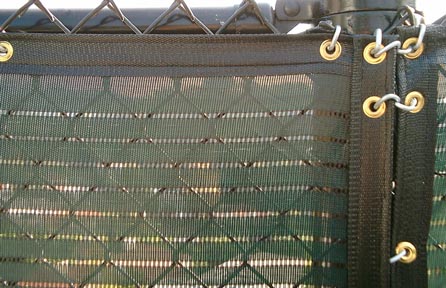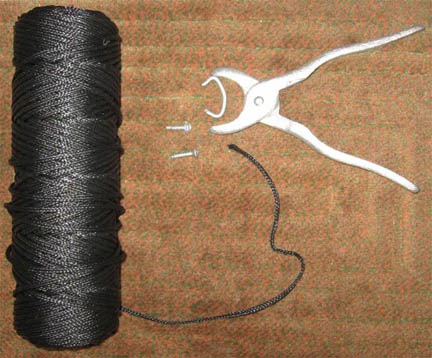|
N.J.P. SPORTS INC.
WINDSCREEN & TENNIS ACCESSORIES WWW.NJPSPORTS.COM 800-773-4657 How to measure for screen? |
|||||||||||
|
|
||||||||||||
|
In order to measure the length of a normal chainlink fence, you need to measure from where on the fence you will attach to - not the posts distance. You can pull a tape from the outside tension bar to the outside tension bar of your fence for smaller pieces - no panel should be longer than 50-60 feet. For longer sections, it is good to make panels that will meet at the middle of posts, as this is the stongest point to attach to and will hide any gap where the panels will meet. (see picture below)
Standard fences are 3', 6', 8', 10', or 12' tall. To get a good height, measure from the valley of the top diamond to the valley of the bottom diamond. Measure from the valley because you can not attach to the tips of the chainlink. The windscreen will slip down from the tip when you try to attach to the top of a chainlink fence. A typical 6' fence will take 5'8" tall windscreen and a typical 8' fence will take 7'8" tall windscreen. Any panel over 7'6" usually needs a center tab or tape to hold the windscreen in the middle when windy. Tabs are hog-ringed on while tapes are run through with wire-rope. Tabs are not as tight but are much easier to install. Our outside binding tape comes either white or black and is grommeted with brass washers every foot. To install, we usually attach the top corners and bottom corners. Then the sides, the top, the bottom, and last the tab or tape. We like to use metal hogrings (see below) on chainlink because they are so strong and do not cost much. On some fences we use lacing, wood screws, self-tap metal screws, or even plastic cable ties. |
||||||||||||
 |
||||||||||||
|
Green Open Mesh installed on a fence with hogrings. Note how the screen does not start from the very top of the fence but in the valley where the diamonds meet.
|
||||||||||||
 |
||||||||||||
|
Some attachment items - lacing, hogrings and ringer tool, metal self-tap screws, and wood screws.
|
||||||||||||
|
How to build a tennis court?
The best advice comes from the USTA and the U.S. Tennis Court & Track Builders Association. A slab for tennis is hard to build so use someone who has built a court before. Make sure there is a lot of rebar for cement so cracking does not happen. The cement should be of hi gh quality with good drainage so popping does not occur. Below are a few web pages of note. A page to purchase TENNIS COURTS - A CONSTRUCTION & MAINTENANCE MANUAL |
||||||||||||
 |
||||
|
WWW.NJPSPORTS.COM
800-773-4657 or 818-247-3914 Fax 818-247-2605 NJPSPORTS@EARTHLINK.NET 548 W. Arden Ave. Glendale Ca 91203 Box #1469 Glendale, Ca 91203-1469 Contractor's Lic No. 284844 C-13 In business for twenty-six years so we know about longevity and odd problems. Not all items are listed and additional fabrics can be used - ask if you do not see what you need. |
||||